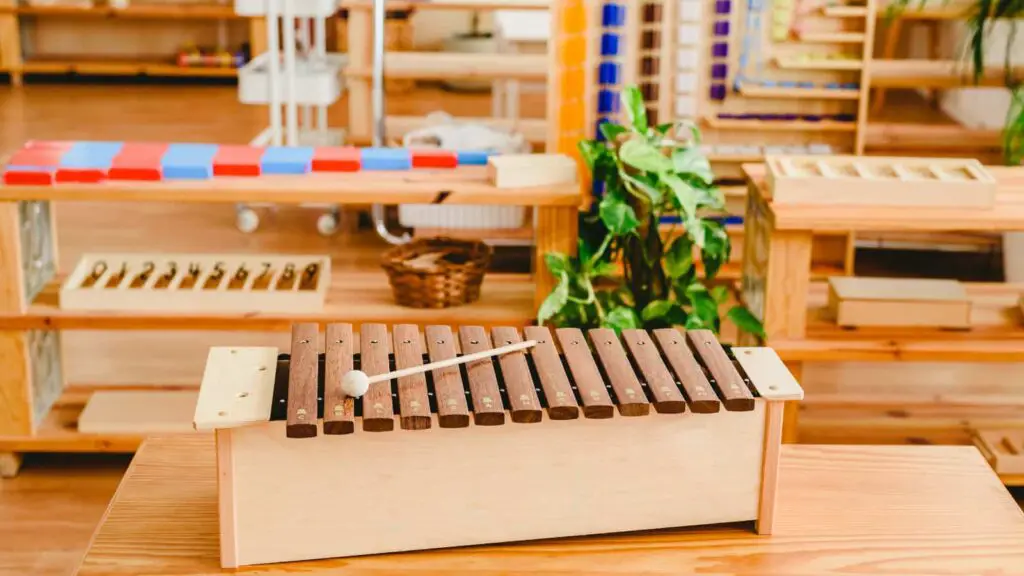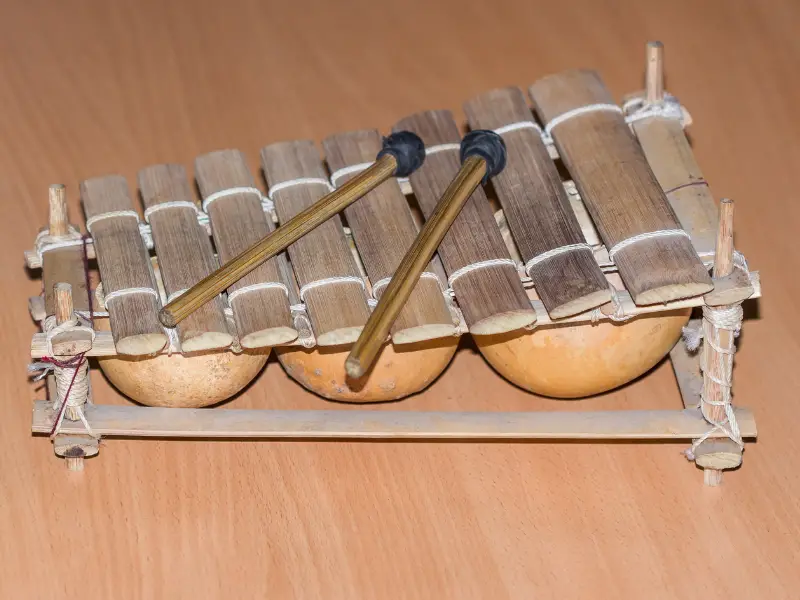Instrumental ensemble training began, for me, as a child in my school’s “Beginners Band.” Every aspiring fifth-grader got to pick the instrument which they were attracted to.
I chose the snare drum.
My mother was not a fan. Little did I know, she had already conspired with the instrument salesman to explain to me that learning the drums was much more than just hitting things.
Becoming a “percussionist,” he explained, was the goal, which meant that I would need to learn how to read and perform melodies as well as rhythms.
Mom was satisfied because I would have to continue studying piano and would soon begin taking xylophone lessons with a local percussionist from our town’s Symphony Orchestra. It was a bargain I struck with her that actually benefited me in the years to come.
Studying xylophone significantly helped my future success as a musical performer and a music teacher by helping me easily learn melodies, develop and improve ear training, sight singing, and a host of other musical ideas; and it helped me to become a well-rounded “percussionist.”

The xylophone is a melodic percussion instrument that has a mysterious beginning, a long history, cultural significance, and a popular following. Its role in an ensemble and as a solo instrument has changed over the centuries but its sound is recognizable.
The xylophone is important to music because of its history, its usefulness and ease in teaching music to all ages, and the significance it holds musically in so many cultures around the world.
Significance of the Xylophone to Music:
1. Xylophones have a rich history
- Who invented the xylophone?
Today’s two-rowed orchestral xylophone was first introduced by Albert Roth in 1886. The earliest documented history of a single-row xylophone is found on temple carvings dating back to 2000 BC. The carvings depict an instrument with suspended tone bars being played by a musician.
- Where did the xylophone come from?
The xylophone came from Asia, Africa, and India. Historical records credit the first xylophones to all three regions. The early xylophones’ simple design make this simultaneous invention and adoption very likely.
- When did xylophones become popular?
The xylophone became popular around the 9th century in Asia and Africa. Europeans became more accepting of the xylophone by the 16th century. The Russian xylophone virtuoso Michael Josef Gusikov toured the world to raise the xylophone’s popularity by the 16th century.
🎵 Note: This video is a fun short film interpretation of how the Xylophone might have been invented.
- Why are xylophones important to music history?
Xylophones are important to music history because they are an example of how instruments evolve in design and in popularity.
The original xylophone was a simple, small set of different-length pieces of wood. Today’s xylophone has two rows of tone bars and resonator tubes. Early xylophones were used in ceremonies. Today’s xylophones are used for entertainment, expression, and education.
- The Xylophones Design
The Asian design from 2000 B.C was wooden bars that were hung and struck to produce tones. This was the grandfather of our modern-day xylophone. Simultaneously in Africa and India, instruments with a similar design, called the harmonicon or Ranat, were being used.
Fun Fact: In the 9th century in south-east Asia, musicians began to lay wooden bars across their legs to play the tones. Soon players fashioned resonators under the bars to sustain and project the sounds.

Boxes and stands for the instrument began to evolve as gourds and other available materials made the instrument larger and louder.
Today’s xylophone was introduced in 1886 by Albert Roth. The modern design was now two rows of tone bars which resulted in a chromatic note pattern.
The bars were suspended by rope and mounted on a stand so that the player could stand to play it. The length of the instrument and the range of sounds were both enlarged and resonator tubes were added to the lowest bars to help project the sound.
- The Xylophones Popularity
By the time of the Crusades, the xylophone was becoming popular in Europe and being used in folk music. The xylophone took on many different forms over the next several centuries until Albert Roth introduced its final design of two rows, using a chromatic scale, in 1886.
Orchestras and theatre ensembles began using the xylophone regularly. In 1903, John Calhoun Deagan began mass-producing xylophones which solidified their design and availability to the public which quicky made them a part of every orchestra.
🎵 Note: The word Xylophone comes from the Greek words xylon and phone meaning wood and sound.

2. Xylophones are wonderful for babies
- Babies need toys that will grab their attention visually and be audibly stimulating.
A basic five-tone colored metal xylophone is a commonly marketed baby toy and is often used to entertain and capture the focus of babies and small children
- As babies learn what actions (hitting a xylophone) make noise, they learn cognitive and motor skills.
Using the child’s small xylophone builds dexterity and develops sound recognition as well as simple ear training.
- Babies can be introduced to music through the simple melodies produced on a small toy xylophone.
The tone bars of a baby’s xylophone are designed to sound good with any combination when they are struck. You can’t hit a wrong note.
🎵 Note: Xylophones are a simple first choice for babies. Babies will learn coordination and develop the senses of sight and sound.

3. Xylophones are great for kids
- The simplicity of the instrument’s layout makes reading music easy.
The design of the modern-day xylophone aligns with the piano and with the design of a musical staff. The notes and tones on the xylophone travel in the same direction visually as do the notes on written music.
- The coordination required to make a melody on a xylophone is less than a wind instrument or a string instrument.
The xylophone makes tones by being struck with a mallet. You don’t need to master breath control like with a wind instrument. You do not need to master any fingering patterns or sequences like with a guitar or piano.
- Learning a musical instrument like the xylophone or simply playing with one for fun will help develop motor skills, eye and hand coordination, and introduce musical ear training.
🎵 Note: Ear training is developing the ability to identify the difference between tones and pitches in music and increasing your ability to duplicate and replay simple melodies and rhythms that you hear. These Bass Xylophones are popular in music education.

4. Xylophones are a great first instrument for anyone
- You can make music right from the start. Simply by striking the tone bars makes a sound.
- Requires less dexterity than stringed instruments. There are no hand positions or strumming necessary to play the xylophone.
- Requires no breath control like wind instruments. The xylophone is a percussion instrument. You don’t have to blow into it.
- There is no “fingering” involved because you are using mallets. Your hands never touch the xylophone.
- Can be used as an introduction to moving toward learning the piano.
The layout of the xylophone “keyboard” is laid out identically to the piano.
- Scales and music theory can be easily explained on the xylophone because its keyboard design makes it a visually understandable instrument.
The xylophone keyboard design matches the design of the bass and treble clef in music manuscript.

5. Xylophones are used in multiple cultures (how?)
- Asia
Japanese Kabuki theatre uses mokki xylophones.
Chinese tea houses may sometimes use them in their ensembles.
- Africa
Africa has the most variety of different styled xylophones. Some of the tunings and construction are more similar to Southeast Asian tuning of their xylophones.
Some of the xylophones are designed with multiple keyed bars moving out from the center like a circle instead of left to right now tones to higher tones.
- India
India has a xylophone-type instrument called kasht tarang or kashth tharang. Its tone comes from hollow resonating tubes rather than solid tone bars and the use of resonator tubes.
- Russia
The Slavic Xylophone is an instrument of simple construction. Russians put grooves in maple or birch wood bars and shorten or lengthen to vary the tone.
( Link to Slavic Xylophone)
- South America
The Latin American version of the xylophone is similar to an African design with calabash resonators. This design and instrument was most likely brought to South America during the slave trade.
- North America and Europe
In North America and Europe, the xylophone used is the two-layer design similar to a piano keyboard and is used in orchestras, bands, and a variety of ensembles including a variety of musical styles.
6. Xylophones are a great instrument to learn music theory
- The layout of the notes visually
Xylophone notes align chromatically with written notes on music manuscript.
(Great place to add graphic of xylophone notes corresponding with written staff music)
- The simple way to make tones
You can play the xylophone on your first attempt. You strike a tone bar with a rubber, wood, or plastic mallet and a tone is produced.
Note: Check out our library of Xylophone articles to learn more about this amazing instrument!
Learn how sound is made on the Xylophone
How to Play Xylophone for Beginners
Famous Xylophone Players Throughout History
Popular Songs With Xylophone in Them
Are Xylophones in Marching Band?
What Other Instruments are Similar to the Xylophone?
We hope this article has been helpful and informative for you in your musical journey. Please let us know if there is anything that we could add or change to make this article a better resource for our readers.
Please e-mail us at: [email protected] to let us know how we are doing!
Disclaimer: This post may contain affiliate links. We only recommend high-quality products that are used and recommended by real musicians. If you use these links to buy something we earn a small commission.
